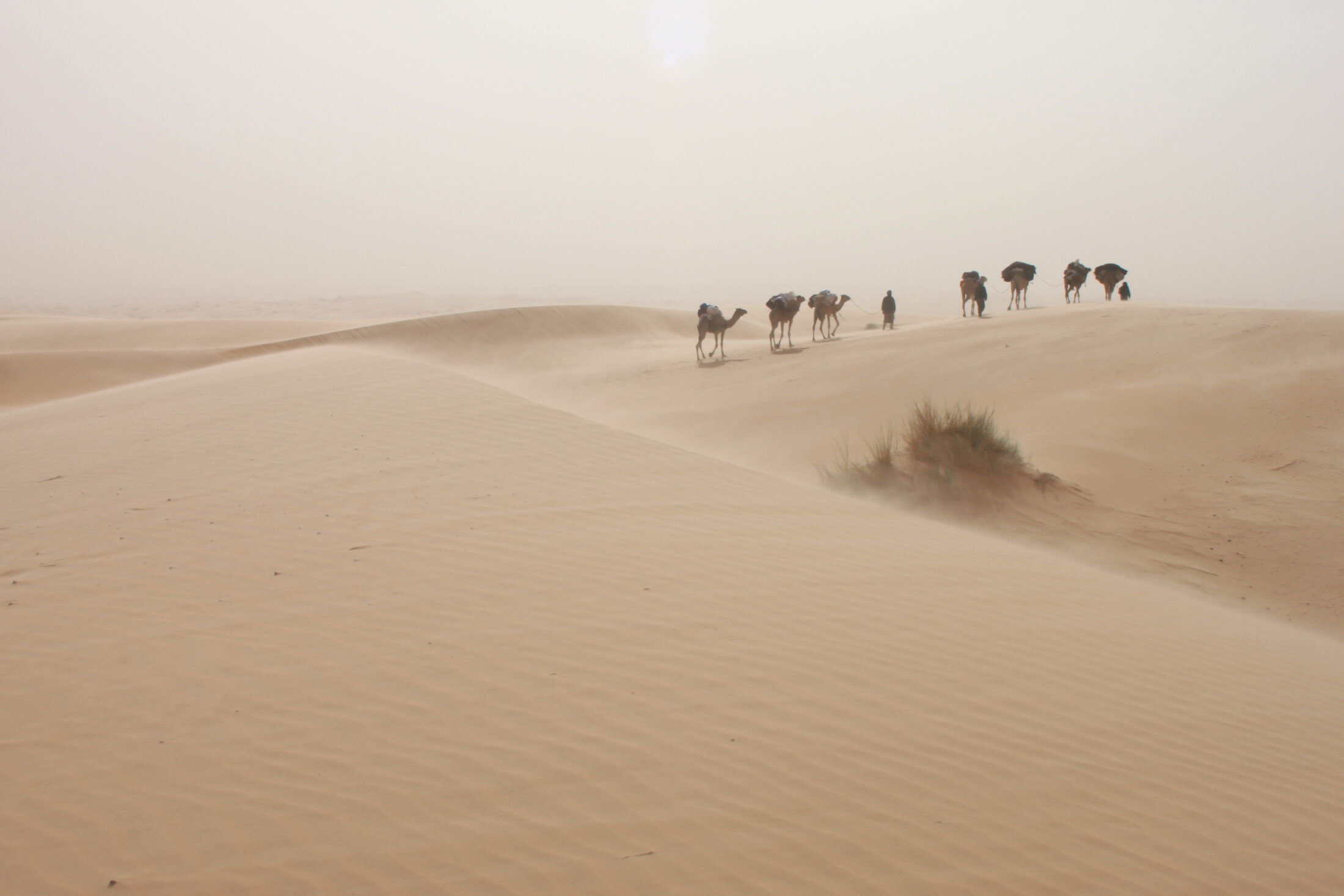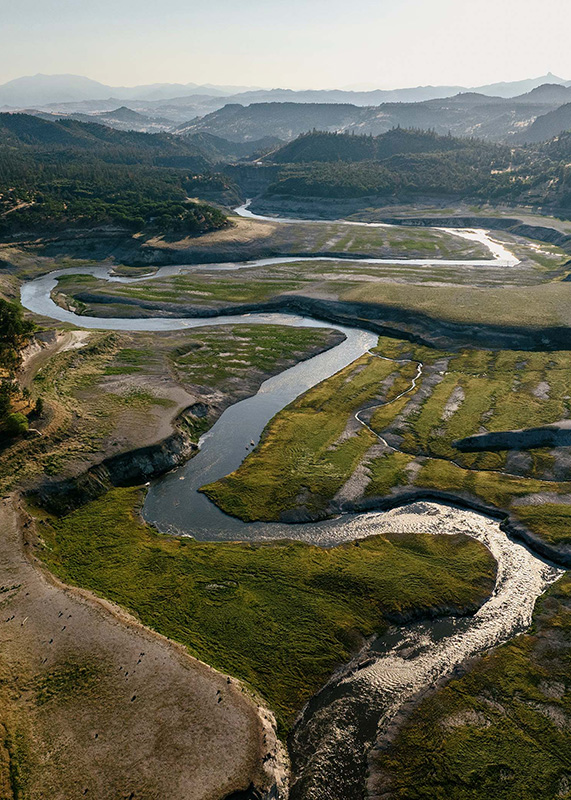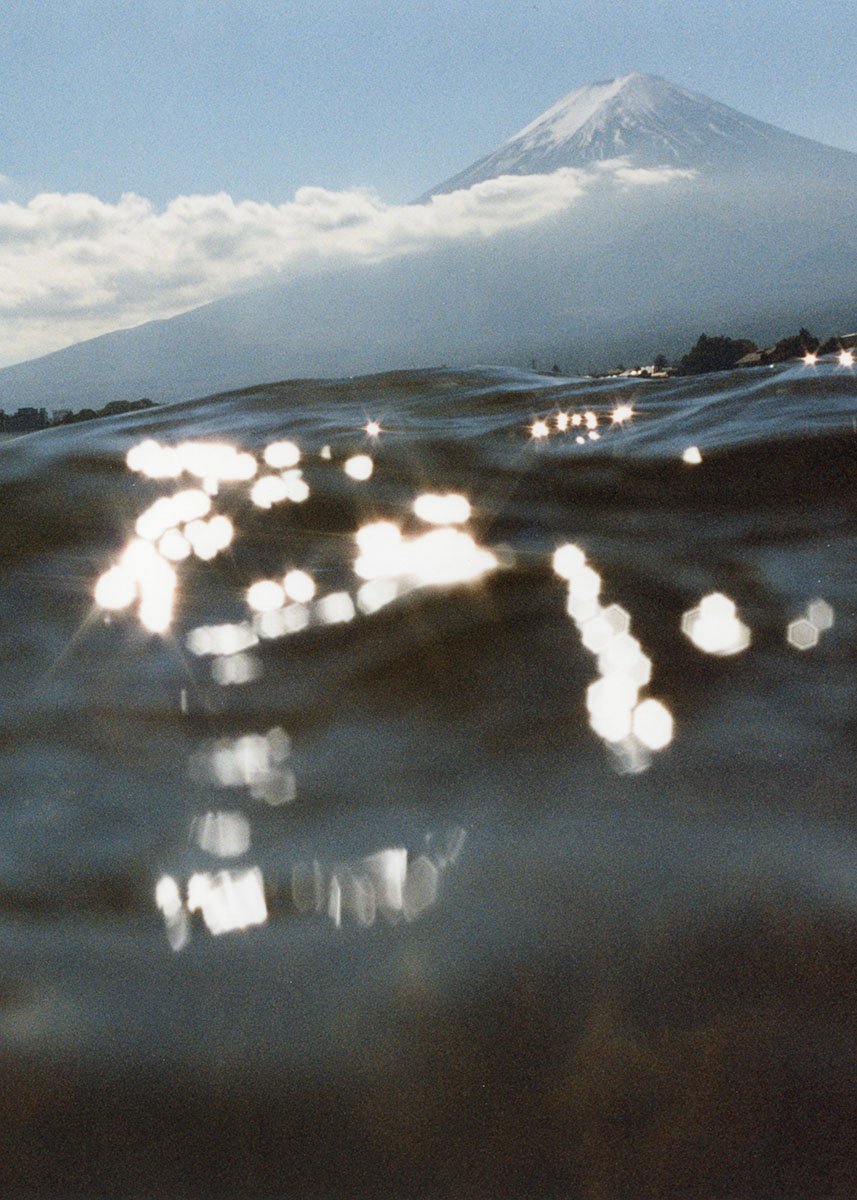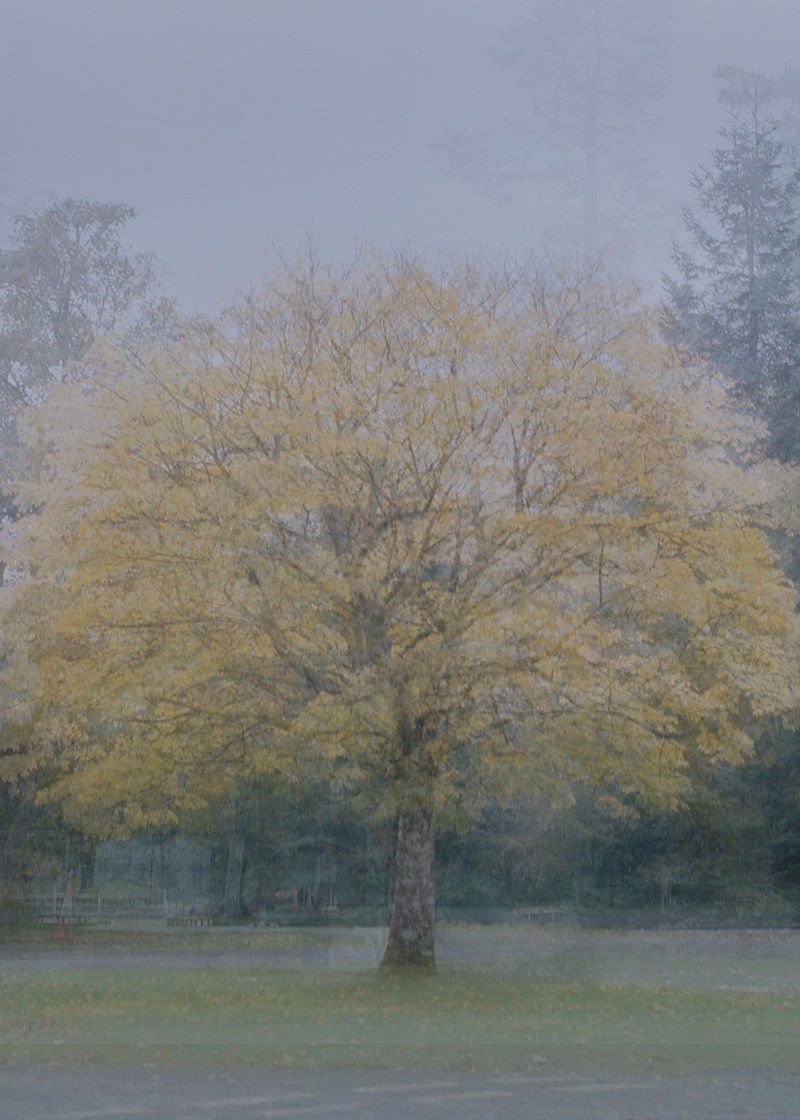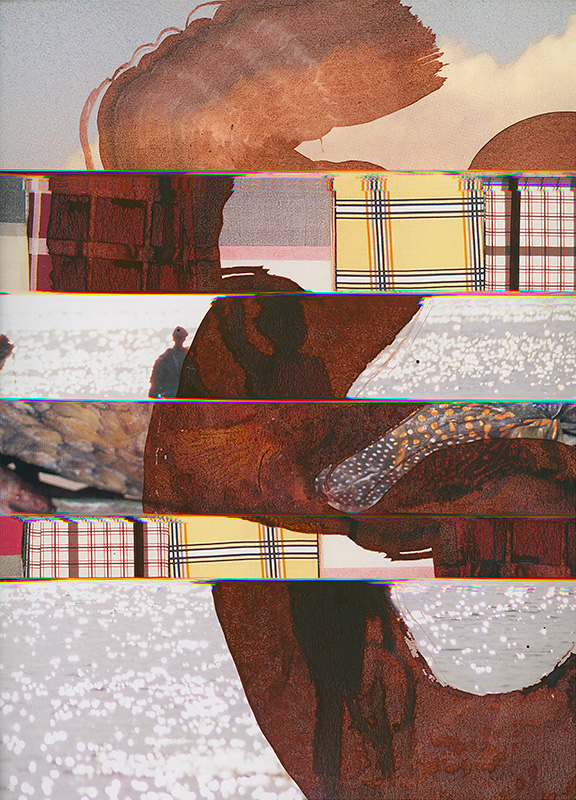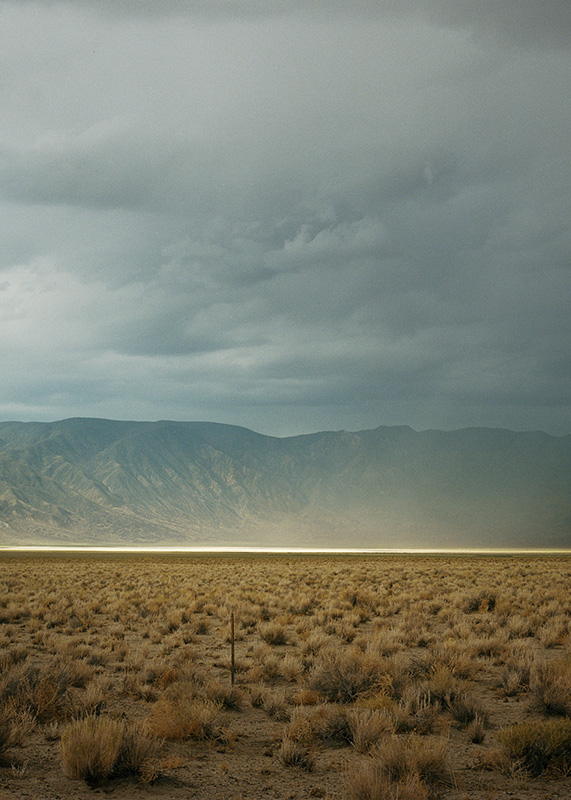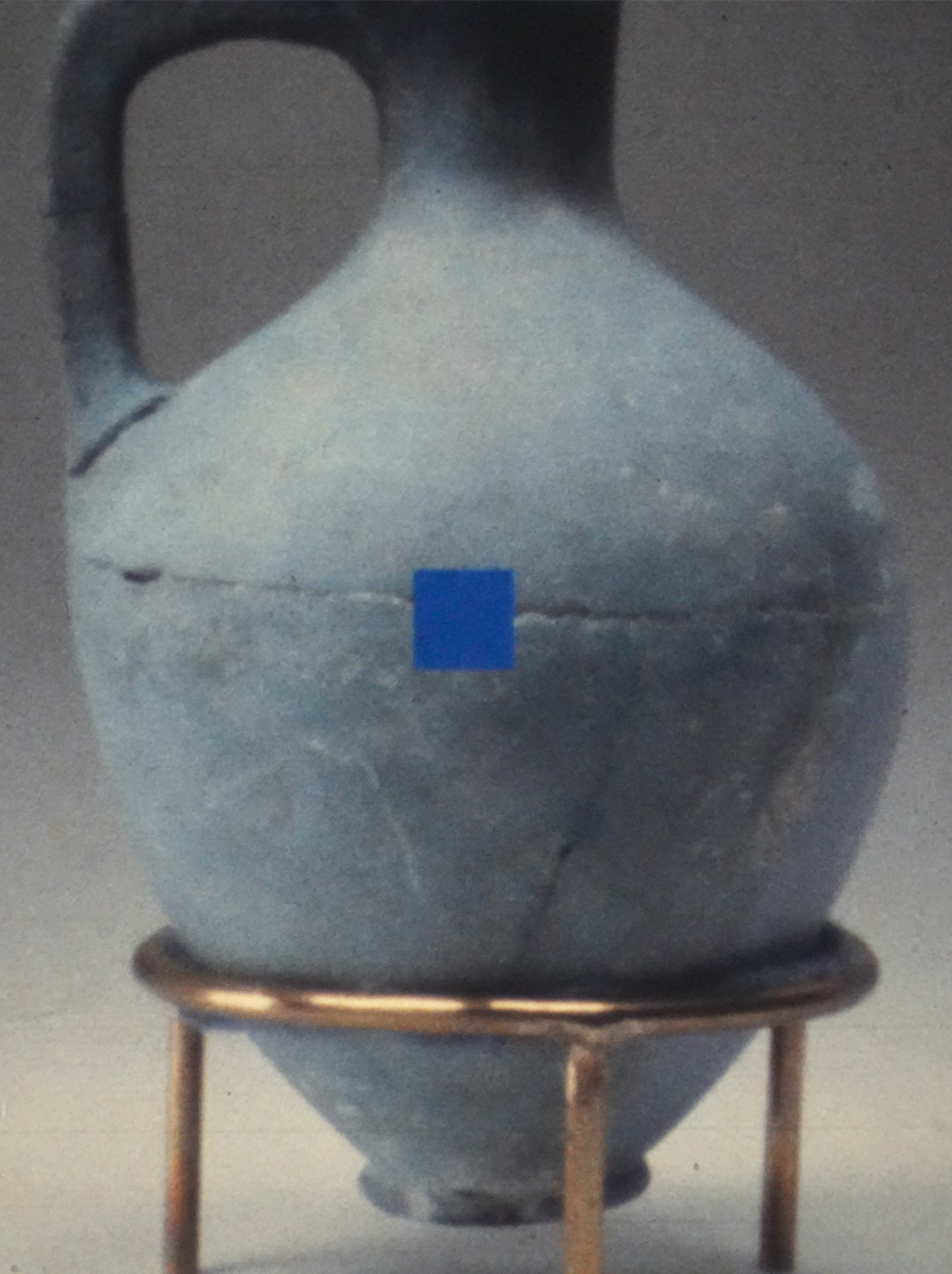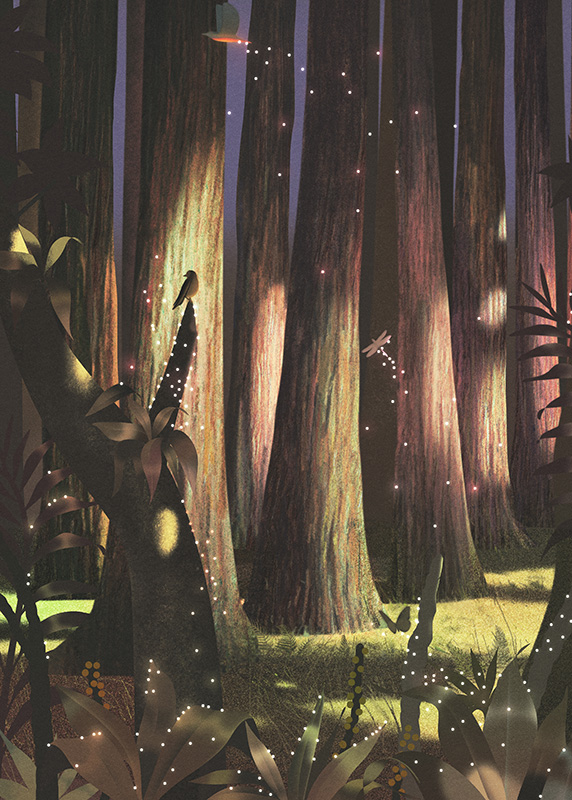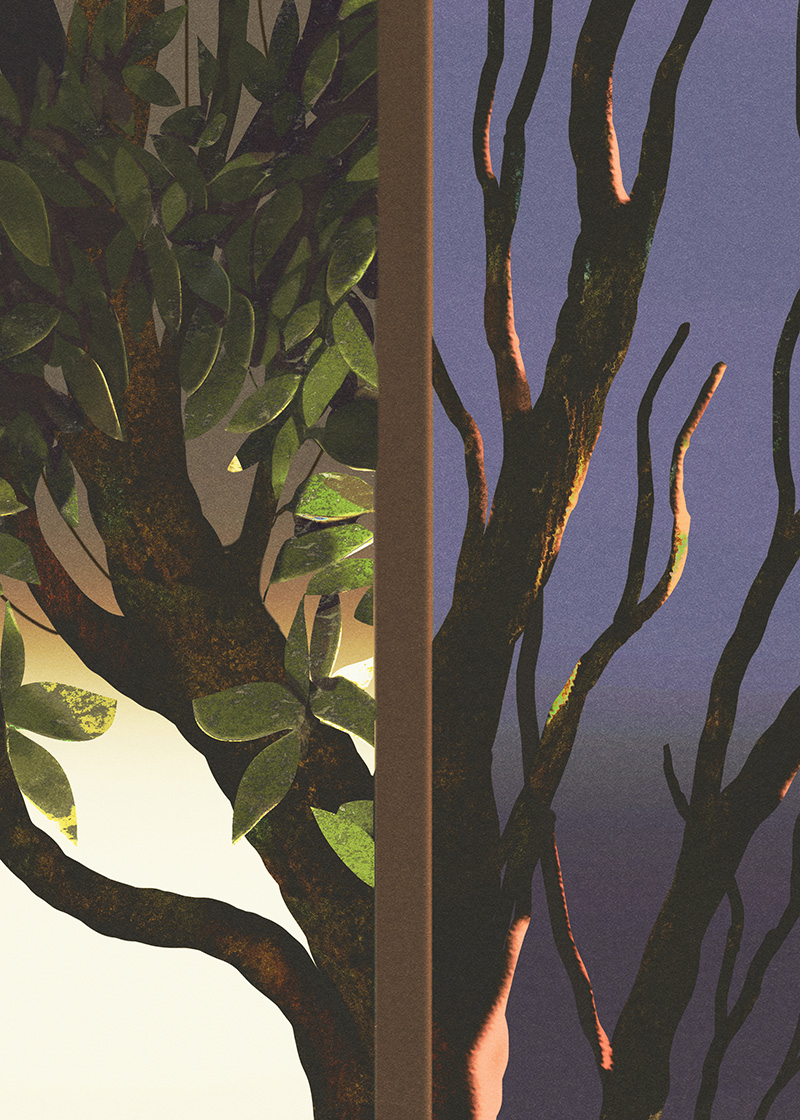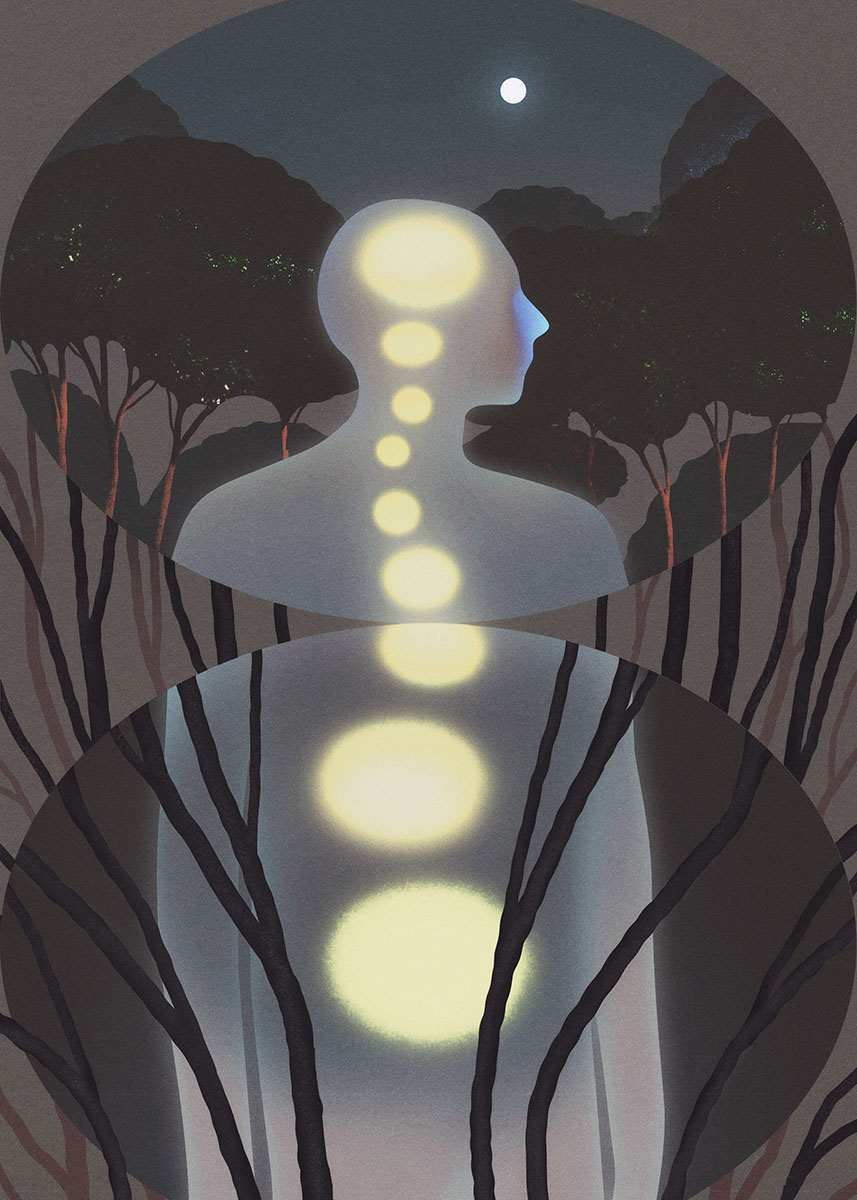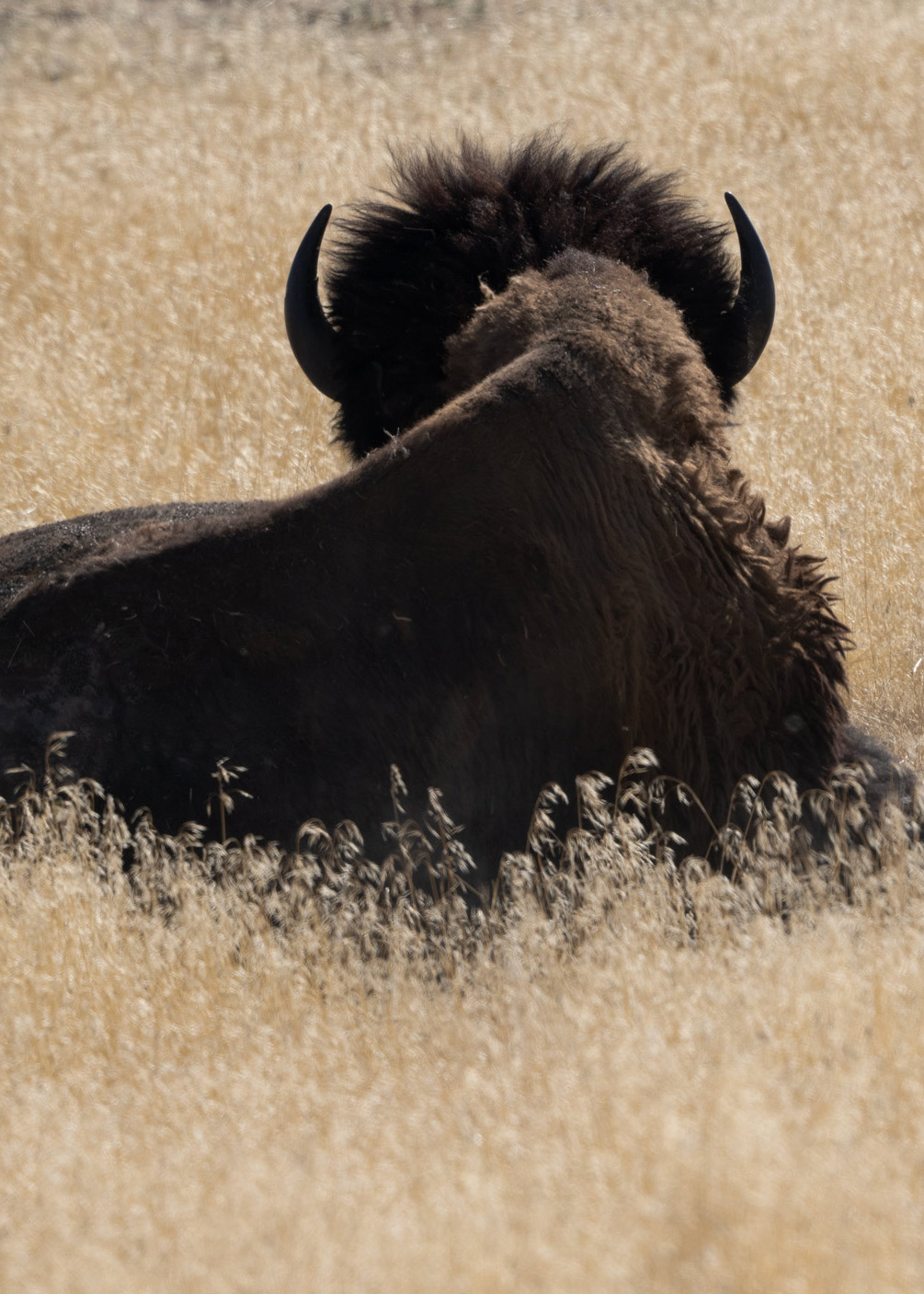
Anna Badkhen is the author of seven books, most recently Bright Unbearable Reality, which was longlisted for the 2022 National Book Award and for the 2023 Jan Michalski Prize for Literature. Her awards include the Guggenheim Fellowship, the Barry Lopez Visiting Writer in Ethics and Community Fellowship, and the Joel R. Seldin Award from Psychologists for Social Responsibility for writing about civilians in war zones. Her essays have appeared in New York Review of Books, Granta, Harper’s, The Paris Review, Orion, and The New York Times. Anna was born in the Soviet Union and is a US citizen.
Tracing an ancient route across the Sahara Desert once caravanned by pilgrims on their journey to Mecca, Anna Badkhen contemplates human movement across shifting landscapes, the impermanence of memory, and what remains eternal in the face of erasure.
Later we will slow down to walking speed: a day of dunes, a day of black lava pavement, a day of maroon pebbles—but on our first day in the Sahara, Sid’Ahmed in the lead truck smooth-talks us past checkpoints, and we drive through the desert fast on a good road. An hour of pale dunes. An hour of sunburnt grass, low and white, an old man’s stubble. An hour of dust storm. Oases perimeter ten-thousand-gallon pillow tanks for water, laid out like waterbeds for the giants who must roam this vastness. Every hour or so, small perfect cubes of single-room homes, clean and pastel, peep out of sand the color of the skin on the heel of your palm, that spot where the lines of life and fate close in. A newborn neatness about them. They stand alone or in clusters, each a concrete replica of a Bedou tent, with a pyramidical roof that aims an iron spike at the sky: a scattering of dreidels, each pinned up beseechingly to heaven, as if to keep them from flying away. Or to allow you to pull them out of the desert as you would an onion, shake them free of sand: here and there a house is choked up to the eaves. When we finally stop near Chinguetti, Sid’Ahmed orders us to shinny up a massive barchan—the first of the many dunes he will make us scale—and, at the top, informs us that a village is buried under our feet.
What is a place? A memory of our presence, a memory of our absence. A separation sets the two apart. Sometimes the severing takes the shape of a mountain of sand that swallows a village. Sometimes it is a journey, a hejira, a hajj. What is a journey for? To remember, to forget. For the next week, Sid’Ahmed will lead nine of us, artists, on foot along the route on which for centuries pilgrims caravanned from the Atlantic coast to Mecca to remember devotion, to forget sin. We will start near Chinguetti, a center of religious scholarship during the Islamic Golden Age, and for seven days we will walk through the desert westward, downwind, like the devout returning from circumambulating the Kaaba. I do not know why my colleagues came to the desert. I came to make sense of our partings, and to remember what binds us. It is January 2, 2020, and human movement and farewells are center stage on Earth. One in seven of us is on the move, including—though I cannot see them from this barchan—the thousands crossing the Sahara toward the imaginary riches of Europe. In a week, the World Health Organization will announce the first death of a novel coronavirus in east-central China; and within two months, the nanoscopic virus will commence the direst season of rupture in humankind’s remembering and split us in unimaginable ways. This, too, will become stored in our memories. I stand on the top of a dune that once was a homeland. All around me, the desert heaves and falls.
Once upon a time, the marabouts of Chinguetti began to collect books. Some volumes they acquired on their travels to other parts of Africa, and to Europe and Central Asia and the Middle East; others were brought to town by visiting scholars, and pilgrims performing the hajj. A library was born, then another. Now in the heart of Mauritania’s Sahara there are twelve, holding thousands of volumes: the Quran and the Hadith, books on Islamic law, astrology, medicine, and theology that have been copied and illustrated by hand; they say the oldest manuscript dates back to the eleventh century. Each page of each book is a masterwork, a work of art.
We pilgrim to one of the libraries, the Bibliotheque al Habott. It is a single-story compound of limestone slabs set a few steps down from the road: Mauritania is nine-tenths desert, and the Sahara is rising, lapping at walls; it has expanded by a tenth since 1920, in part because of the natural cycles of rainfall and wind, in part because of man-made climate change. A tin sign on the roof announces that this library was founded at the end of the eighteenth century and contains more than fourteen hundred volumes in twelve disciplines. The librarian, Abdullah Habott—a descendant of the founding marabout, five generations removed—explains that the library abides by two rules: that it be maintained by one of the marabout’s male descendants, lest it shift patrimony; and that the books in its collection never leave Chinguetti, lest knowledge seep from the town. In this way, the founder, Sidi Mohamed Ould Habott le Grand, set out to preserve memory in the desert. But the manuscripts are disappearing in place. Abdullah Habott turns precious pages with cotton-gloved hands: some pages have been nibbled by mice; some pages are bound in embossed leather cracked by drought; on some pages, mold patinates miniature drawings in gold leaf; some books have round perforations boring through them from cover to cover where termites have drilled into the pages, as if to take core samples. And some books are no longer books but powdery termite refuse, each a miniature bound desert, a sand mandala recording the way we become severed from our own past. The cartilage of history is precious and perishable: millions of family chronicles of millions of people lost in transit or in the Middle Passage, lost in translation or untranslatable, abridged out of fear or neglect or unsuitability, so that we are displaced not merely in place but also in time, our ancestral narratives mislaid or missing or hidden from our sight, inaccessible.
At the Habott Library, dizzied, I begin to fall down one of the termite holes, like Alice in Wonderland. I know that I am witnessing a marvel. I know that I am supposed to feel something profound. But I cannot. There is simply too much space-time.
Sid’Ahmed marches us through Chinguetti’s sand-swelled alleys, halts us at an overlook, leans on the limestone stump of an unmortared wall. A young black goat wearing a wide choker, to keep it from goring the shearer, toddles through former bedrooms; the choker, hammered from a tomato tin can, is inscribed with “USA.” Once upon a time, says Sid’Ahmed, centuries ago, this was someone’s home. Chinguetti dates back to the eighth century—it is the same age as Beowulf, Charlemagne, the Second Siege of Constantinople—but the original structures are long gone; the ruins date back to the thirteenth century, compounds abandoned by families who moved to bigger cities, with more opportunities and less sand. I cannot say if Sid’Ahmed entirely disapproves of urban migration: his family house in the regional capital fifty miles to the west, where we took our lunch, has electricity, a water pump, and flush toilets; but here he rues the encroaching desert, the carelessness of the locals who let their livestock roam free, global warming. I sense nostalgia. “Another problem,” he says, “is the tourists. This ancient place they pick apart for souvenirs, stone by stone.” To demonstrate, Sid’Ahmed plucks a rock from the leftover wall and tosses it underhand downhill. The stone thuds dully on sand.
Once back from the desert, I will read articles about Chinguetti that describe the city and her libraries as endangered. But aren’t all of us in the world endangered? Our onward path is uncertain and perilous; our past, by and large, is a poem of erasure. The hero sets out on a quest-journey—and when she turns around to look, the breadcrumbs are gone.
What sets the ruins of Chinguetti apart from the many other ruins I have seen on other continents, in peace and in wartime, is not the desert. It is the books. Each is an intention to connect to a past and to reach into the future, each a memory of the people who wrote it multiplied by the memories of the travelers who brought it here, the people who have read it, the people who never will. I wonder how much of the sand that is swallowing Chinguetti streets is frass.
Months afterward, I hold in my hands a different book, of another desert sojourn. Yasmina Benabderrahmane’s La Bête is a collection of Super 8 still frames captured so close up I want to move the pages farther from my eyes, to look from farther away, from a barchan, say, to put some distance between us. Something in the book is disappearing—a valley of clay potters, a bird sanctuary, a grandmother’s village in Morocco, a second cousin ill with leukemia—but the disappearance is too near to articulate, or too still to see: you can only sense it. I look at one image after another and think, What is this? What is this? In a book insert, an interviewer calls it “the aesthetics of the fragment.” This is how we find ourselves—in the desert, or anyplace: fragmented, confused by distance and proximity and loss, tricked or miraged or simply ignorant; something is disappearing as we watch, what is it, what, what?
Day One
The oasis at La Gueila sits in the lee of a terraced slope of barchan dunes. It began, says Sid’Ahmed, as a camel watering hole; eventually, some of the pits the camels had shat took root in moistened sand, and now it is a date grove. This is where we stop for our midday meal, halfway through the day’s walk. We spread our mats on the sand, recline, watch the noisy palm fronds transcribe in cuneiform shadow the account of caravans past. Our own pack camels wander off to water; perhaps their droppings, too, will sprout a date palm, to commemorate our insignificant passing.
The dates of La Gueila taste dense and dark, like buckwheat honey.
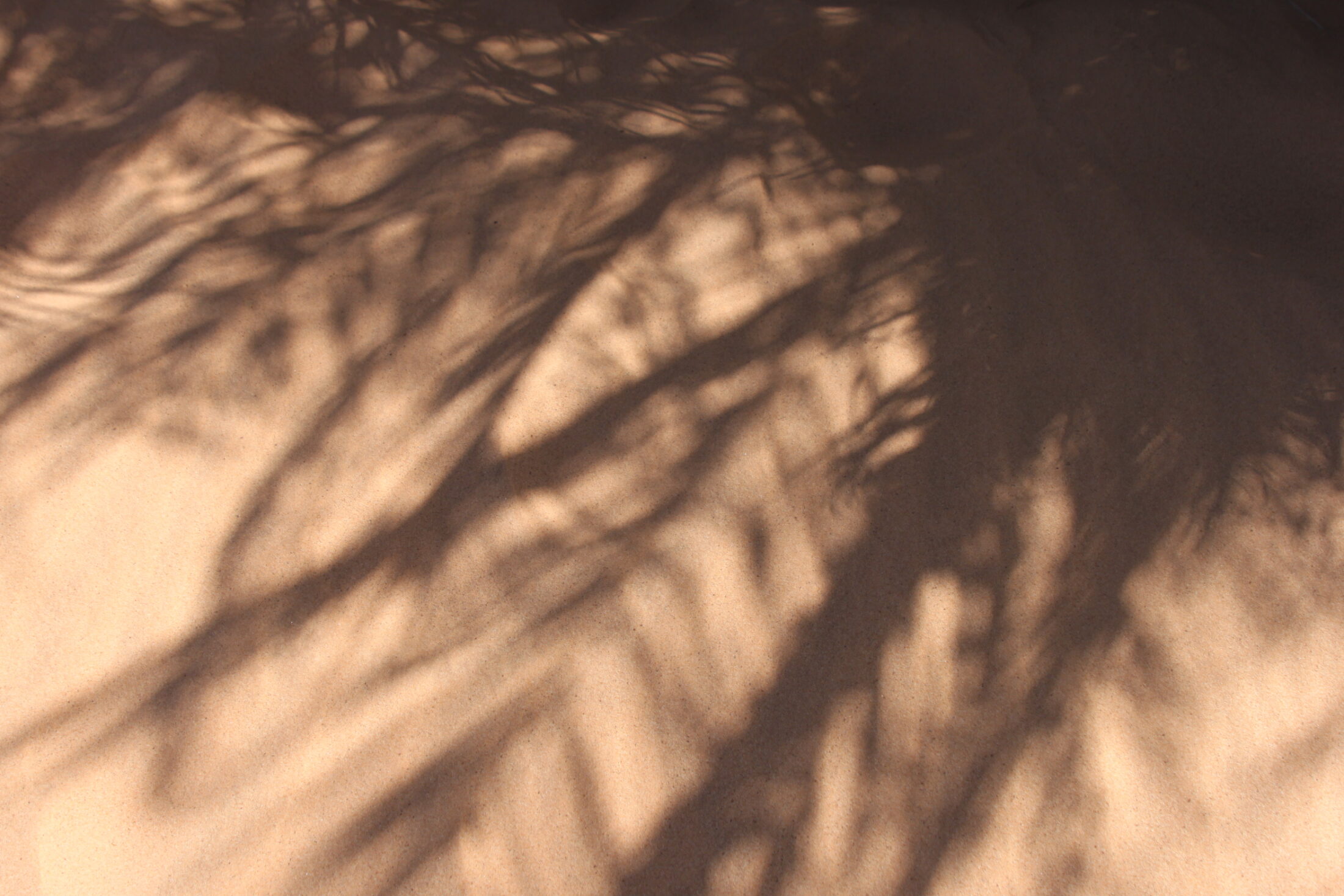
Day Two
We walk into a field of sandglass, little gray slivers. I pick up a few; they are featherlight. Sid’Ahmed explains: the sand was fused together by the flame of a meteor that is said to have crashed here between sixty and seventy million years ago, around the time of the Cretaceous-Paleogene extinction, the fifth, what scholars sometimes call the K-Pg event. (Watch a simulation video of Earth’s landmass formation around the time of the supposed impact: Continents, not yet wholly parted, palm one another in geologic languor. Oceans churn.)
The first Western scholars to investigate the supposed meteorite crater, in the early twentieth century, believed the meteorite to have weighed one million metric tons. The existence of such an impact has since been called into question. The ostensible crater was determined to be a natural hematite formation, and the only confirmed evidence of that skyfall is the nine-pound chunk of mesosiderite a French consular official picked up and shipped to Paris in 1916. The scientific term for the mixture of iron and igneous rock that make a mesosiderite: enigmatic. I hold a sandglass filament to the sun; it is the opaque of Roni Horn’s glass sculptures from the book she titled The Sensation of Sadness at Having Slept Through a Shower of Meteors. It, too, is enigmatic, mute. Mute, from the Greek μύειν, myein, to be shut of mouth and possibly of eyes. Says Anne Carson in Nox, a threnody for her brother’s final and irrevocable absenting: “Note that the word ‘mute’ (from Latin mutus and Greek μύειν) is regarded by linguists as an onomatopoeic formation referring not to silence but to a certain fundamental opacity of human being, which likes to show the truth by allowing it to be seen hiding.”
Somewhere north of the wild glass field, the aviator and writer Antoine de Saint-Exupéry, plane-wrecked, wrote: “A sheet spread beneath an apple-tree can receive only apples; a sheet spread beneath the stars can receive only star-dust.” It is impossible to wrap my mind around the heaviness of a skystone falling onto the desert, and how it might be preserved in something so weightless—and there is something exquisite about not being able to wrap my mind around things, it is like making space for the shape of a human ear, or for falling in love; I think we need to practice it more often, the unknowing.
Another version to explain the shards: lightning fused the grains together. One way or another, the shards were skymade, as we are all skymade.
Day Three
In Islam, the concept of predestination is one of the six articles of faith, like the Oneness of God and the Day of Resurrection. The expression for this tenet is bibliophilic: maktoob, one says, it is written; the word originates from kitab, book. When the Prophet Mohammed first encountered the archangel Gabriel in the Arabian desert, the archangel, who spoke not for himself but for God, reciting verbatim God’s message, ordered: Iqra! Read! This command, which mystified the unlettered Mohammed, was the first word of the Quran—one of humankind’s three most important books—all hailing from deserts—which continues to mystify us today.
What is written? Around me, the desert documents time in micro and macro stenographies: dunes and mountains, rocks strewn by ancient eruptions, empty whelk shells from the last subpluvial, the barometric script of bent grass on fine sand. Which of these grains remember the footfall of the people who first walked here, more than 300,000 years ago; or the Neolithic nomads who drove their cattle here from the Horn of Africa; or the Arab-speaking invaders who first brought Islam here in the seventh century of our era? The harmattan of January blows steady from the east, from deeper in the Sahara, where each year up to 350,000 people braille the desert with their aspirant feet on their way to Libya, the main point of departure from Africa to Europe. This year, more than a third of all the world’s migrants whose deaths en route will be recorded will die in the Sahara, though the officials who chronicle such heartbreak concede that no annals document in their entirety these deaths, these forever-raptures, and that the number of people who plant their bones in the Sahara may be twice that of those who perish in the Mediterranean Sea. The sand grains that peck my skin as I walk behind Sid’Ahmed—have they traveled from far enough east to remember their passing?
Memory is fickle, a trick storyteller. Everything in life happens once and forever, until we will it differently, if only in our minds. Sometimes memory drifts off, jumbles the stories we tell ourselves and the past we think we know. This inadequacy is predetermined and unavoidable, a function of anatomy: neurons hold on to memories unevenly, storing some and dismissing others, and the memories they do store are malleable, untrustworthy, even possibly untrue: our brain may create them on the fly, in the very moment of the encounter, when something indefinable in the unique and ephemeral soundboard of our cortex is strummed and resounds. Neuropsychologists call such memories ghosts; they call them superposition catastrophes. Memory is a trace, and a trace can linger forever or be erased in a minute. I have seen this happen in the desert. A wind gust—and the cleft hearts of camel prints, the footprints of cameleers and my own, the slight dark funnel mark of my piss in the concave lee of a barchan: all gone; and once they are no longer, who can say the place is the same, or that it ever even existed, or that we ever passed through? Then, ten paces away, the sand vanishes completely, gives way to the palimpsest surface of a reg, and I am walking on miniscule shells that remember when they were the bottom of a prehistoric lake. The desert perpetually erases and rewrites itself, erases and rewrites. Watch the metronomic oscillation of a bent stalk of grass compass the same distance over and over and over.
The desert perpetually erases and rewrites itself, erases and rewrites.
Once, for almost a year, I lived in the desert, in West Texas; it was the year newspapers announced that the Perseids would be twice as prolific as recent meteor showers: two hundred asteroids per hour. The following morning, I found on the ground a painted bunting, a migrant bird. He was every color. He was dead. A shooting star, arrived. But if you pull back, if you consider Earth’s progress around the sun, you can argue that a meteorite’s transient state never ends: it simply assumes, on impact, the larger body’s orbit.
The last glaciation drenched the Sahara. You can still see, from a satellite that orbits the Earth, the dry courses of the mighty rivers that veined it during the early Neolithic. You must step that far away to access a desert’s memory. They say in fifteen thousand years the Sahara will be green again.
Day Four
The day before, Sid’Ahmed ordered us up a mountain ridge that dragon-jaws out of the desert: the Zarga Mountains, elevation 2,493 feet. He had been driving us hard, harder than the pack camels, which he absolved, routed down lenient shortcuts. We had been slogging, heads sandward. Sid’Ahmed, tall, sinewy, in his late forties, wearing a flapping boubou and hiking boots, seemed to never tire. But he was not without mercy. On the other side of the ridge, he promised, we would slow down. We would lunch and make camp and stay two nights, not just one: we would not have to walk twenty kilometers the following day, would not have to walk at all. We tramped up the mountains in resignation.
What did we see from the top of the Zarga ridge? Huge crescent sandbanks. Dazzling dune chains neverending. A fallow rectangular melon patch, fenced against camels, that could have been the size of a stadium or of five. The desert distorts scale, tricks the eye. Mirage: a word that entered the English language in the year 1800 from the French to describe the phenomenon of what an eye perceives when light rays pushing through layers of air of different densities are distorted, excessively bent. Originally, the word referred to the optical illusion occurring in hot, sandy deserts of objects reflected on water. The word obtained its figurative sense—deceptiveness of appearance, a delusive seeming—within a mere twelve years: such was the urgency to describe the human desire to see what we want instead of what is there.
We caught our breath on the ridge. We drank from our water bottles. Head feathers frilled by wind, a pied crow—a trickster of fables—picked apart something in the sand. After a few minutes, Sid’Ahmed grinned, plopped down on his bony ass, and demonstrated what he swore was the most efficient method of sliding down the slip face of a barchan.
Now we wake, pee, wash our hands with sand. Pause only briefly to watch the desert dawn explode: we are almost used to it by now, the way God must have been almost used to dawn on the fourth morning of Creation. Overnight, a small animal, maybe a lizard, left a punched tape of prints by the zip-door of my pop-up tent; I read it as “I was here,” the message all of us the world over leave behind, the only message that never changes. It is cold. I walk toward the breakfast fire, where Sid’Ahmed and the cameleers are praying toward the Kaaba. Some say the Kaaba’s Black Stone is a meteorite.
The common map symbol for desert is dots, like the ellipsis. Like saying, something is omitted here. Like saying, there probably are other versions. The desert, like a book, has many interpretations, many lives.
Dots are also a common way to depict stars: omens, dreamscapes, narratives of our predestination; tokens, writes Juan Eduardo Cirlot in his Dictionary of Symbols, of both multiplicity and disintegration; promises that there is more to the story or that the story is fragile, endangered. Disaster: Ill-starredness. The extinguishing of stars, starlessness. A catastrophe. End of story.
A year after I arrive in the Sahara, both of my parents become infected with the coronavirus: first Mom fell ill, on January 1, on the anniversary of my crossing into Mauritania from Senegal; then Dad, on January 3, the anniversary of our stop at the oasis of La Gueila. I am in Philadelphia; they are in St. Petersburg, Russia, eight time zones and four thousand miles away. Two weeks pass before they begin to recover from high fever and weakness and, in my mother’s case, a nasty cough and headaches so severe she is unable to wear reading glasses or touch the hair on her head. For the first few days of their sickness, the scariest days, I cannot write, my chest feels weighted with sand. Friends offer links to medical studies for comfort: this or that symptom indicates a milder illness; this or that treatment has proven the most effective. The way world science is poking in the dark reminds me of desert dunes shifting, and of how tiny we are, and how unfathomable the world. I just wish there were a less sorrowful, less biblical way of being cut down to size.
I think about the people around the globe who have gone through, are going through, such impotent dread, who also, day after day, worry about their loved ones far away; those who remember and worry about and mourn the travelers who set off across the Sahara and perished, their deaths unrecorded by official ledgers. “A single person is missing for you, and the whole world is empty,” writes Philippe Arriès, and each moment at least one person is missing for millions of us, often out of reach, flung apart as we are, undone transcontinentally. The grief makes it impossible to move: this is aporia, απορία, an absence of path, a passagelessness that engenders a state of powerless, immobilized confusion, of being at a loss, a no-way that is not the same as a presence, a separation of heart and will.
Yet there is something else: the connections that may fade but never disappear, the gossamer threads of intimacy we float behind us as we disperse, the kinship that may be undone in time but that our memories sustain as vivid, iridescent as a bunting’s plumage. Picture the brief animation anthropologists sometimes use to demonstrate human impact on the planet—a pale, luminescent tapestry of roads, railways, pipelines, cables, air traffic routes, and shipping lanes latticing a nighttime Earth—except instead of physical infrastructure, imagine the other ways in which the Anthropocene connects us: the poly-threaded, shimmering veil of yearning and missing and care and love.
Who, which caravan, carried its seed here, how long ago?
I walk away from our campsite in the lee of the Zarga, fast or slow I cannot tell. I stop. I stay. What does it mean to slow down in the desert? No stillness is slow enough. The meteorite of Chinguetti rushed headlong into the would-be desert, then slowed down.
I stretch out on my back upon the Sahara. Of lying on desert sand Saint-Exupéry writes: “this density that I could feel at my shoulders continued harmonious, sustained, unaltered through eternity.” I recall that for a while, Saint-Exupéry flew mail planes in Latin America for Aeroposta Argentina airline, connecting people.
Next to me I spot a stunted purple flower. Who, which caravan, carried its seed here, how long ago? I watch the desert be its mineral self; I watch a sand shadow build behind the flower. The desert meddles with time. It pretends to be motionless, unaltered. Lie on top of a barchan and you will think you see eternity. Lie long enough and it is you buried underneath.
But already, Sid’Ahmed is calling for lunch.
After the swallows’ hunt, past haloed moonset, when all color surrenders to sound, the Milky Way swirls in a slow, galactic zikr. Wind boomerangs between cliffs, threshes stars off their stalks. I stand outside my tent with a star-purpled book about a poet abandoned on a rocky island; I pick out the lines:
the wind is the most distracted messenger I know

Day Five
Rock, dune, rock. A grove of Sodom’s apples with their poison fruit: turn around—or take a bite, like Alice—and the separation will take the shape of a pillar of salt: antiseptic, infertile, desolate, like the desert. A grove of miswak trees to clean our teeth. A camel’s septum ring has ripped out, and for a couple of hours we follow the startling little rosettes of her blood drops. The sura that begins with the invocation “Read!” is called Al-Alaq, The Clot, for the “mere clot of [congealed] blood” out of which God created the first human. The Arabic word for human, insân, إنسان, may have its root in nisyân, نسيان, which means to forget; it also, linguists say, may come from uns, ﺍﻧﺲ: to be related, to be close to, to love and be loved.
At dusk, a narrow valley, more swallows. After supper—soup made with Maggi packets, bland pasta with chickpeas and carrots, dates—we linger in the large common tent. I ask Sid’Ahmed what place he considers his. Sid’Ahmed and I are close in age, and I feel that we have bonded a little, through sparring half in jest over world politics and through calmer conversation about Islam and the mystery of scholarship, about having grown children, which we conduct in a mix of French and Arabic and hand gestures. I sense a contentment about him that I envy. I also envy his knowledge of place, that in the pathless desert Sid’Ahmed remembers the paths.
“My place?” The man laughs. “I’m a nomad, I don’t have a place! My place, hah. Whenever I hear the words ‘my place’ I think of that time I went to this wedding and it was late and this driver guy said we could spend the night at his place, and he had this tiny little house that was so full of mosquitoes it was impossible to sleep.”
Then, getting serious:
“In Arar I have a small plot with five date palms.”
Day Six
Some of the pages in Benabderrahmane’s La Bête are glossy, some matte; most images are black-and-white, and the color images are so faded they might as well be black-and-white also. The pages in the book are not numbered, and in this, La Bête resembles Borges’s Book of Sand, which has neither a beginning nor an end and is infinite, all-encompassing of our virtues and iniquities. The reproductions are imperfect, just like any attempt to capture the desert is imperfect. In most images, there is something at bottom left of the frame. Sometimes it looks like an exoskeleton of a scorpion, flesh winnowed out by wind; sometimes it looks like an inscription in an ancient tongue. Something stuck to the lens, maybe a hair, or a memory.
Where are we from, and where are we taking all of our imperfections and virtues and memories; if the vanishing point is an asymptote, ever beyond reach, then what is the point of our path? In the last book the philosopher Gillian Rose wrote before dying, Paradiso, she says that accepting aporia means accepting “that there may not be solutions to questions, only the clarification of their statement,” and that such acceptance is essential to a philosophic life. What does that mean in the desert? Perhaps it means to remember that each footstep is a fall arrested, that each signifies both a departure and an arrival, distance and approach; and it may also mean to behold in awe this twofold gift-curse and then to let that, too, drift from focus until motion becomes distilled into a pure prayer: not a supplication or a plea—God “needs no petition,” as the mystic theologian Abdullah Yusuf Ali reminds us, “for He knows our needs better than we do ourselves”—but a remembrance of thanksgiving, an exultation evoked, what Rose calls “a constant awareness of existence … as if on each intake of breath one were immersing one’s hands in the deep folds of some fine material saturated with glorious colour.” And lo, on Sid’Ahmed’s orders on the outskirts of M’Heirth, we clamber up another difficult dune—and before us, downslope, iridescent and sudden, shaped like a sparkling placenta, glorious as paradise, shimmers a spring-fed pool.
For the first time in six days, I wash my face and hands with water, not sand.
The ninety-fourth sura, Al-Sharh, repeats:
Verily, with every hardship comes relief.
Verily, with every hardship comes relief.
Ali, the theologian, says the repeat is for emphasis—but note how the second line feels different from the first. This is what the desert teaches about place. You hold it in your eyes, you hold it in your hand, and you get to choose—and you get to choose differently each time. What depends on your choice? Everything.
Al-Sharh is sometimes translated as The Solace. This sura is also sometimes called Al-Inshirah, The Expansion of the Breast.
Imagine the other ways in which the Anthropocene connects us: the poly-threaded, shimmering veil of yearning and missing and care and love.
Before we reach the source at M’Heirth, we walk through an outpost of seasonal date pickers. The date harvest runs from June to August, and the oasis is empty, a ghost town of rock shelters. Underfoot: sand, dry fronds, empty sardine tins, the trick of swallows’ shadow dance. On the southwestern edge of the oasis we stop at a row of wells.
The wells are pale mortared cylinders, magnified versions of the termite holes that gouge the books of Chinguetti, rabbit holes for a full-sized Alice. They are hand-dug and plastered by hand; the water inside is nacreous, misty. In Mauritania they call this kind of well ‘ayn: Arabic for eye but also a proto-Semitic word that means eye, fountain, or looking, seeing. You are a fool to think you have come to the desert to see. It is you, thirsty and vulnerable, whom the desert puts on its velvet showcase display. Lean over a well: the cataractic water is committing you to memory. Maybe that is so it recognizes you should you return.
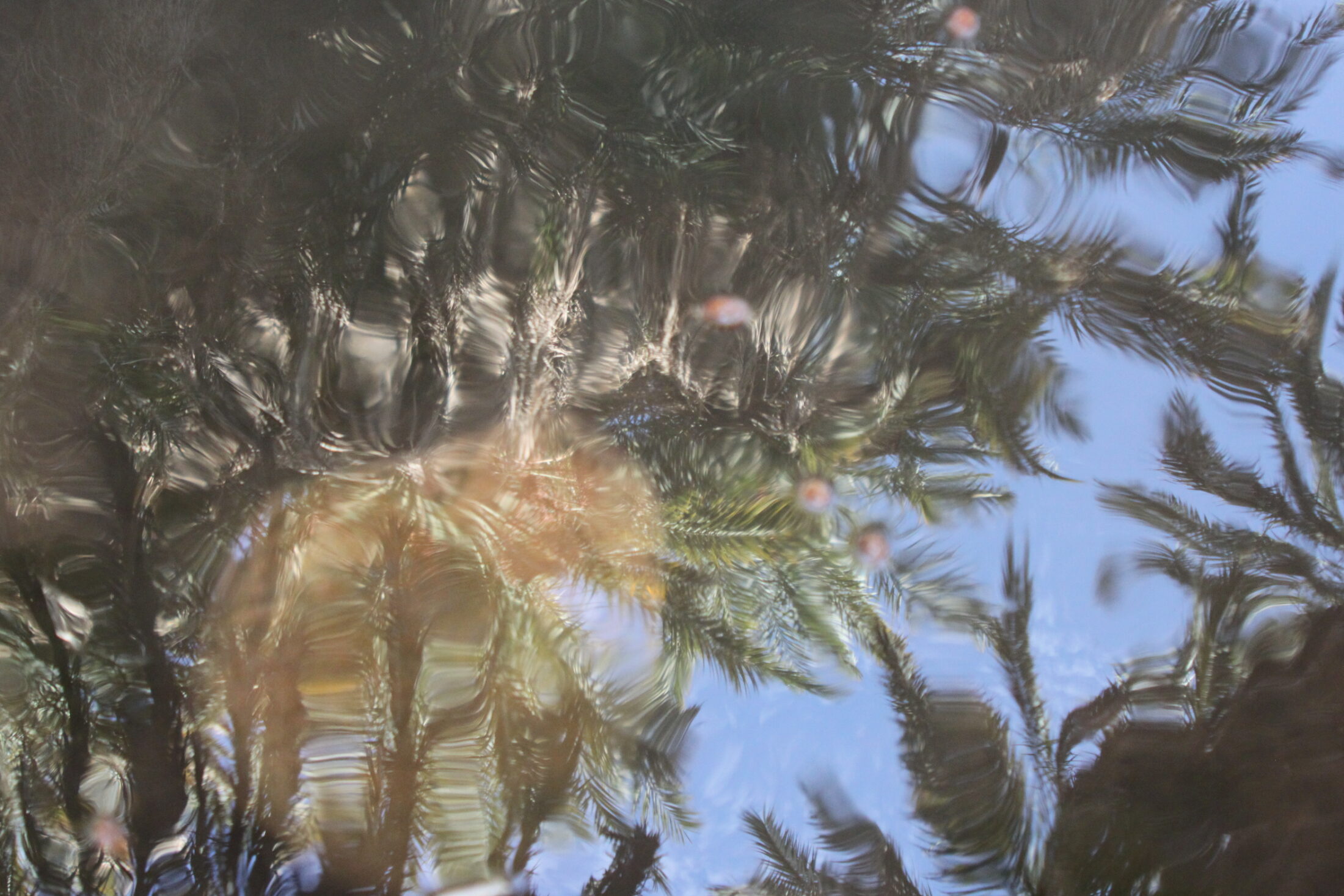
Day Seven
Exeunt camels, enter all-wheel-drives, and we are back on the straight paved road east to Nouakchott. Now the sensation of being transported at an accelerated speed numbs the mind. Barchans, seif chains, regs, scarps, pale meadows of dry grass like fuzz on a plucked chicken, oases, blink past. Suddenly on the road a large herd of camels, some merely day-old calves, wobbly and puppyish. The drivers slow down. The metal carapaces of our trucks jostle past the camels’ animal confusion, and when we pass their sole herder I remember the terror, several years earlier in Mali, of walking with a herd of zebus upon an unexpected paved tarmac that guillotined fast and merciless through the sandy scrubland just south of the Sahara, and watching helplessly the dreadful road split the bullish herd in two. My companion, a seventeen-year-old boy named Hassan, the youngest son of a dear friend, scarecrowed madly in his blue robes to force the animals off the asphalt just in time for a silver SUV to whiz toward Bamako. A war was raging up the road and the car had a bullet hole in the trunk door. The air quivered in its wake, the scent of hot tar billowed, stilled once more, and the rest of the cows lowered their heads as they crossed. Born and bred in seasonal migrations through thorn and sand and periodic grasslands since the beginning of time, the animals made up all of Hassan’s family wealth, and his family’s entire history was branded into their pale rumps. Hooves’ purchase on pavement was uncertain, as when crossing a marble floor in stiletto heels; meteorite shrapnel spilling on a reg must sound like this. And as our all-wheel-drives finally pull out of the camel herd and speed up again toward the Atlantic coast, I think, as I thought then, that there is something immoral about a well-paved road, and about the speed of departure to which many of us have subjugated our lives.
I remember Hassan’s shoes on that day: narrow, plastic, pale-turquoise two-dollar lace-ups with thick soles, scrawled over with phone numbers in ballpoint pen. On Sahara’s southern shore, men often write phone numbers on their footwear—contacts of relatives, of middlemen, of lovers they have left behind—to be dialed when needed or when possible from a borrowed phone. Their shoes are dossiers, telephone books, annals of connection, impenetrable by thorn or time or termite. Consider farewells in global terms: a seventh of the world has said goodbye to someone else, and as we part from the people who are meaningful and close—or were, or could be, or could have been—we carry with us our kinships’ map legends, the tokens of our connections, as Hassan carried on his first ever solo dry-season cattle drive a stoppered gourd with his mother’s millet couscous, a blue tarp wrapped with lengths of lasso his elder brother had given him, the family’s black milking calabash, his father’s blessing, and his phonebook shoes. Like most men in the bush, Hassan did not write names next to the numbers, because like most men in the bush he was unlettered, so he had to memorize to whom each number belonged. But I have never seen a man dial a wrong number by mistake, because each number signifies a particular kinship stored just so in the immeasurable library of the heart, in the ever-expanding breast, each specific part of the shoe—left and right toe box, vamp, quarter, heel counter—corresponding to a distinct thread of devotion a traveler will carry across any parting and any distance without confusion, just as I, without confusion and across any distance, carry on the underside of my eyelids the face of a beloved.
Antoine de Saint-Exupéry, Wind, Sand, and Stars (New York: Harcourt, Brace and Company, 1940), 104.
Alice Oswald, Nobody: A Hymn to the Sea (New York: Norton, 2020), 31.
Abdullah Yusuf Ali, The Meaning of the Holy Qur’an (Beltsville, Maryland: Amana, 1999). Quoted from an annotation of the Quran’s first sura.
